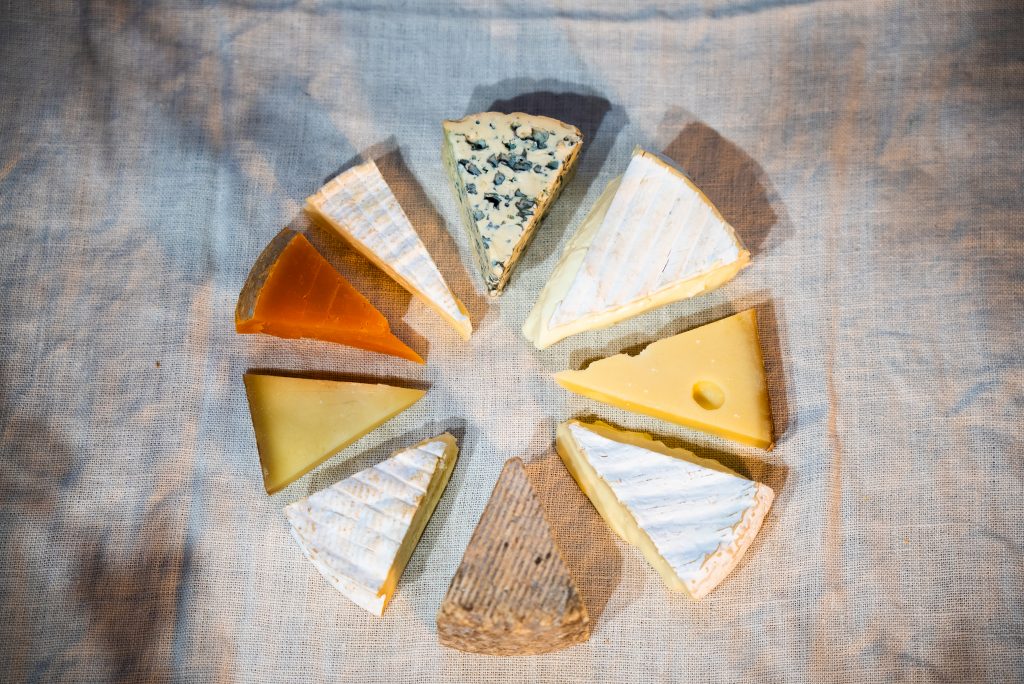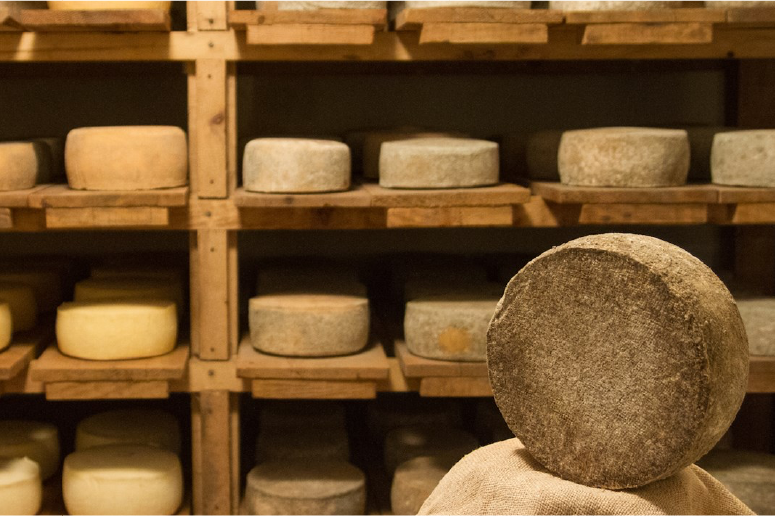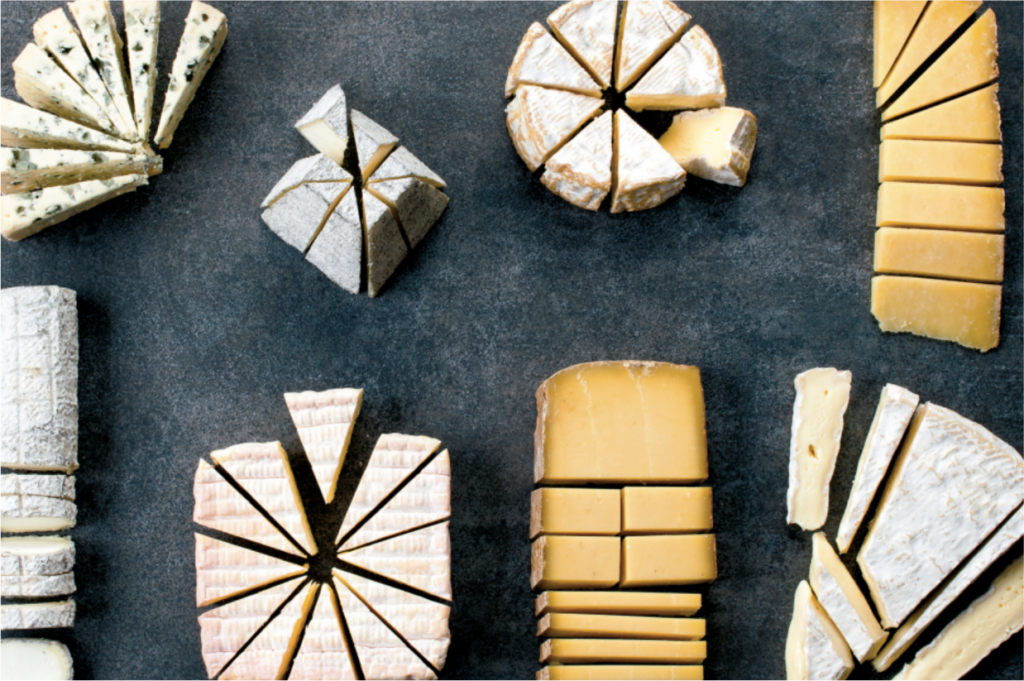
In Europe, every cheese reveals its region. Behind every cheese is a dairy tradition, and behind every family of cheeses is a special process.
Cheese Tips

Selecting
Buy cheese more often, in small amounts. Keeping a cheese for a long time at home in conditions that are often unsuitable will cause it to lose softness and its taste will change.
Dare to try cheeses you haven’t had before. Challenge your Cheese monger to open up new worlds to you! Tell them what you’re looking for in terms of flavours or textures: strong or mild, creamy or firm. Don’t hesitate to taste shapes that are less engaging – you might be surprised by their flavor.
Cutting
Cheese comes in all shapes and sizes – round, square, heart-shaped, pyramid-shaped, etc. From the rind to the core, the taste of a cheese is never the same, and depending on whether it is square or round, it is matured in a different way.
Flavour is generally stronger near the rind, and the texture is creamier, and at times even chalky, towards the middle. In light of this, cheese should be cut so that it has both the rind and the core (it’s not polite to cut the nose off a wedge of cheese!)

Flat, round cheeses
(such as Camembert, Coulommiers, and Reblochon)
Large round cheeses
(such as Brie de Meaux, Brie de Melun, and Coulommiers)
Small round cheeses
(such as Pélardon, Crottin de Chavignol, and Picodon)
Square or heart-shaped cheeses (such as Valençay, Charollais,
Maroilles, Pavé d’Auge, Pont l’Évêque, Carré de l’Est and
Neufchâtel)
You handle these like you would round cheeses like Camembert.
Cheeses in the shape of
a pyramid or cylinder
Large slices of cheese wheels
(such as Comté, Salers and
Morbier)
You should have part of the centre and part of the rind on your plate.
To do this, you start by cutting slices from the centre parallel to the rind, then, once you’ve cut half of the portion, cut the heel in the other direction, or into a fan shape.
Cheeses served with a spoon
(Mont d’Or, Vacherin)
Given their runny consistency, some cheeses must be served with a spoon. A special technique is required to serve Mont d’Or which consists of cutting 90% of the way through the upper rind of the cheese and then lifting it like you would the lid of a tin can.
Logs of cheese
(such as Sainte-Maure de
Touraine)
Blue cheeses in a cylindrical shape (such as Fourme d’Ambert)
Blue cheeses in a cylindrical shape must be first sliced, and then cut like a Camembert.
Wedges of cheese
(such as Roquefort)
Blue cheeses cut into wedges must be placed flat and cut into a fan shape from the centre of the thin part.
Very hard cheese
(such as Mimolette extra aged)
Getting the most out of your cheese
If you’re putting together a cheese platter, make sure you bring it to room temperature first. Take your cheese out of the fridge a couple of hours before serving.
A cheese platter is as much about visual pleasure as it is about taste, playing with the multiplicity of shapes, textures, colours, and flavours. To bring out the best in your cheeses, choose interesting accompaniments.
Add some currants and nuts to your platter (like hazelnuts and almonds). Fresh fruit goes well with cheese, especially apple with Emmental, and grapes with blue cheese. Try breads with various textures too (fresh baguettes, sourdough, rye). Of course, wine obviously can pair really well with cheese. White wine is usually more suitable, however reds and work with strong, firmer cheeses.
Funded by the European Union. Views and opinions expressed are however those of the author(s) only and do not necessarily reflect those of the European Union or FranceAgriMer. Neither the European Union nor the granting authority can be held responsible for them.
